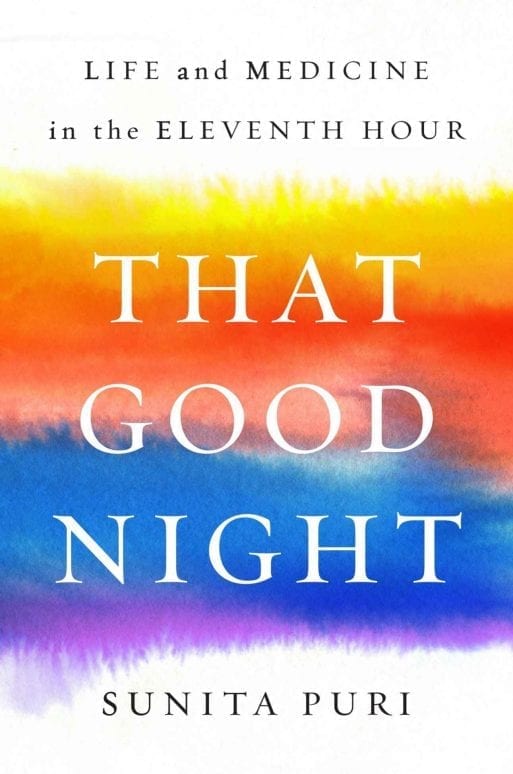
In “That Good Night,” palliative doctor Sunita Puri helps patients determine what it means to live and die well. By doing so, she encourages us to ask those questions, too.

Sunita Puri
As the daughter of deeply spiritual Indian immigrants, Puri was raised to see life as fleeting and impermanent. Yet when she followed her mother into medicine, she was swept up in a culture that values survival above all else – even, sometimes, a patient’s wellbeing. Following a residential experience with palliative medicine, Puri chose the emerging specialty in hopes of easing her patients’ suffering and helping them to come to terms with death.
In “That Good Night,” Puri lyrically illuminates the struggles of her patients and their families. She introduces us to Donna, who spent five years on dialysis before deciding that the need for further procedures made it untenable. There’s Julia, a woman dying of breast cancer who’s plagued by the need to share things left unspoken. And there’s John Tan, desperately ill from a post-chemo fungal infection, yet determined to live to see his daughter’s graduation.
But “That Good Night” is much more than a collection of moving anecdotes from what Puri terms “the borderland between life and death.” It’s a guide to important conversations for the terminally ill and their friends, family members and caregivers. It’s a clarion call for people to consider these issues sooner rather than later. And it’s a compassionate look at the value and impact of caregiving:
“You remind yourself that it isn’t your job to erase or to justify all of their suffering, but rather to see it, not ignore it. To ease it when you can. And to be there as they move through it, as it passes through like clouds in the sky.”
As Puri navigates her charges’ fears and dying wishes, “That Good Night” forces us to confront each situation as if it were our own. Would we choose to remove a dying child from a ventilator to prevent further suffering? Would we want to undergo CPR if it could buy us a few more painful days of life? Would we be able to recognize when family members might benefit most by focusing on their comfort, rather than their survival? Puri emphasizes the importance of communicating such needs and desires whenever possible:
“Lacking the language to discuss mortality is the ultimate way of erasing it. If we could somehow normalize instead of avoid the fact of death, perhaps phrases like ‘goals of care’ and ‘advanced directive’ would roll off our tongues as fluidly as words like ‘antibiotics,’ ‘chemotherapy,’ and ‘surgery.’”
Puri doesn’t sugarcoat the difficulty of these discussions. And yet, she finds the courage to hold similar conversations with her own parents – implicitly challenging readers to take similar steps.
While this book helps us navigate such difficulties, it ultimately speaks to anyone desiring to live a meaningful life. Puri found that her encounters with her patients forced her to “reconsider what it means to live and love well.” For many of Puri’s readers, “That Good Night” will do the same.

 “That Good Night” by Sunita Puri
“That Good Night” by Sunita Puri


 Composting Bodies Is Now Legal in a Dozen States
Composting Bodies Is Now Legal in a Dozen States

 Trans Remembrance Project Provides a Community of Grieving
Trans Remembrance Project Provides a Community of Grieving














